Wow, I came close to completely missing this because the box sets are off on another section of the shelves. (In fact, I’ve got to double back and talk about Willie Dixon, whom I did miss). And they’re something I rarely break out. The place I bought this box set, for whatever reason, really sticks in my mind.
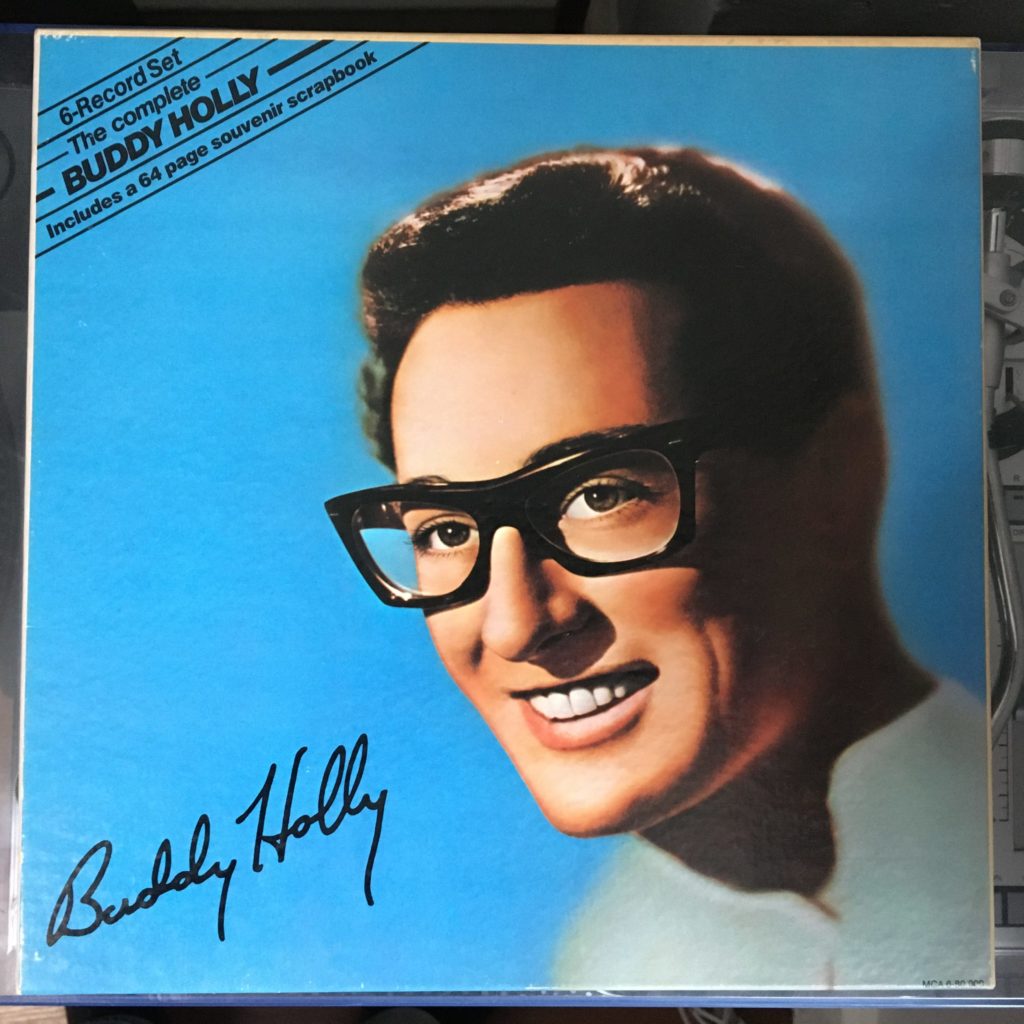
There was a weird moment when Spectrum, Syracuse University’s student-run store that included Spectrum Records, moved out of the ramshackle University Avenue building that housed both it and all of student government (where the Sheraton hotel is today), and moved into a building at the end of Walnut, on the west side of the park, right by Bird Library. That building had previously been called the Student Center, which wasn’t really what it sounds like; it had meeting rooms and was used for occasional functions but most students probably never set foot inside it. There was a cafeteria of which I have exactly zero memory, and there was a bar there that was renowned for catering to the Lacoste shirt set, meaning I never ever went there and neither did any of my friends. (Today the building is called the Slutzker Center for International Services, which is 100% of what I know about it.) It’s probable that the move was necessitated by the construction of the hotel, which opened in 1985. I don’t know how long Spectrum was in that building before it relocated to the Schine Student Center in 1986, and I’m not sure I’d even have remembered it was ever there except for a couple of key albums I bought in that location that always stay with me. So apparently I got to that point in my record collecting, a good five years of serious collecting, before I bought a Buddy Holly record. This was on sale there – I seem to recall it was something like $25, which wasn’t nothing, but it was also SIX discs.
Of course, I knew the Buddy Holly story. I knew his hits, I knew the many many covers of his songs throughout the ’60s and ’70s. But I didn’t have any of his records. In terms of original albums, there were only three, really. But his recorded output was actually voluminous. This incredible box set takes a chronological/geographical approach, following his development from western music to his early rock and then The Crickets and his incredibly influential hits. These six discs were, I believe, everything he had ever recorded in the studio. Like Eddie Cochran, it’s just remarkable how much music he created, and how much range he had, in such a short span of time.
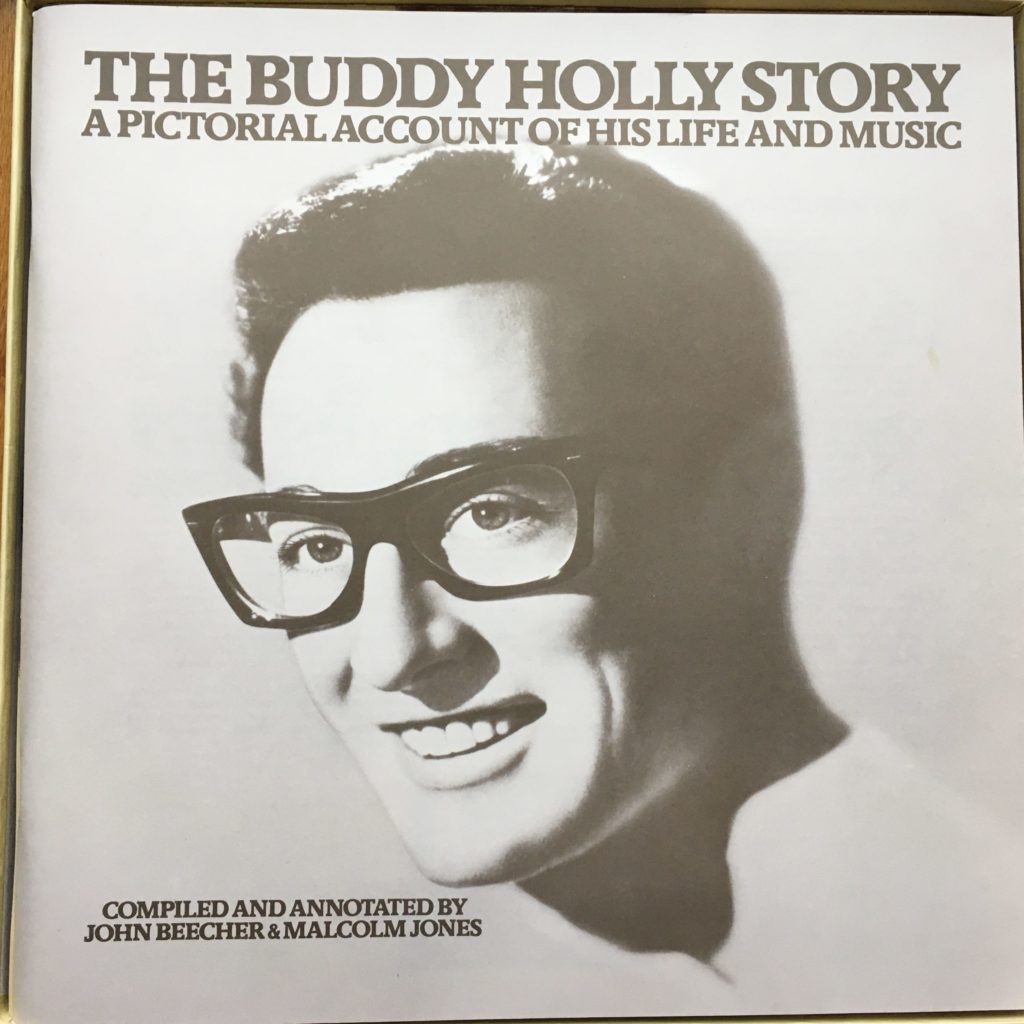
Buddy Holly box set booklet cover 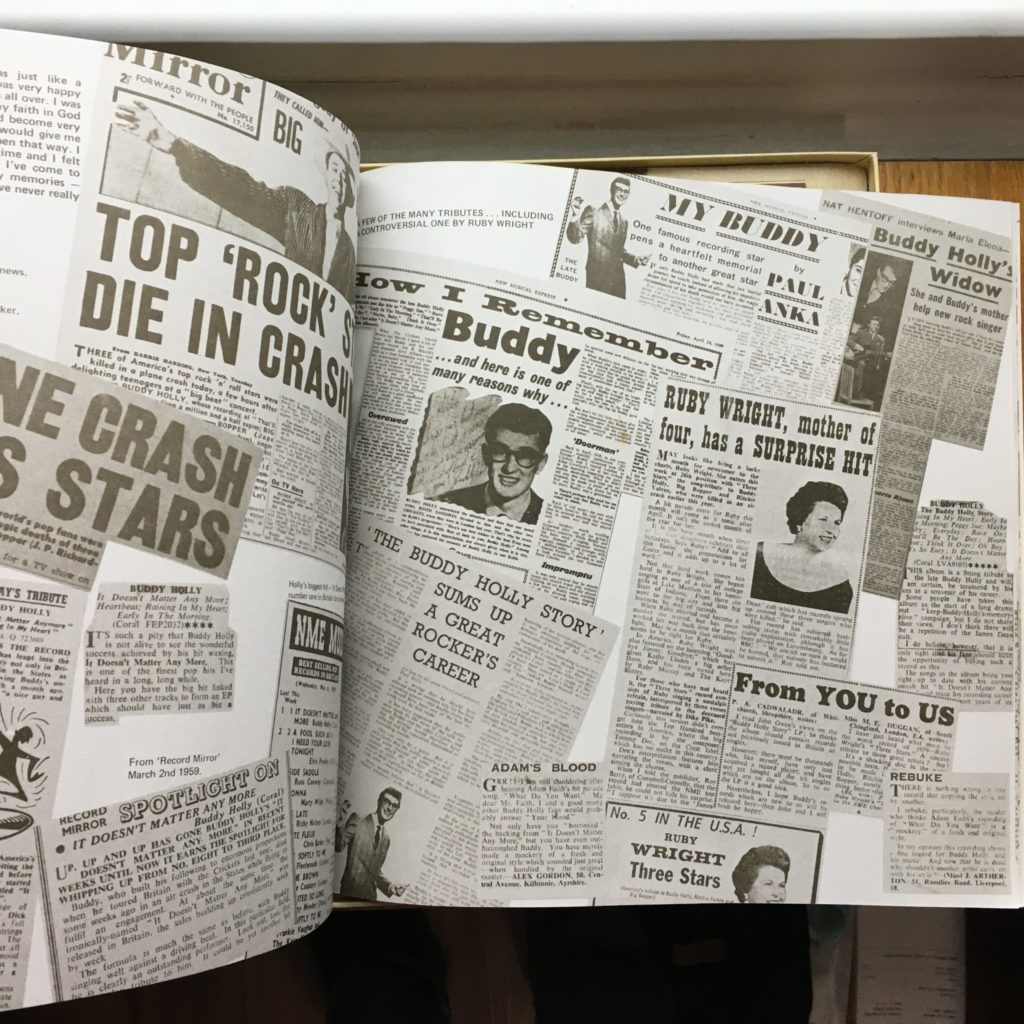
Buddy Holly box set booklet 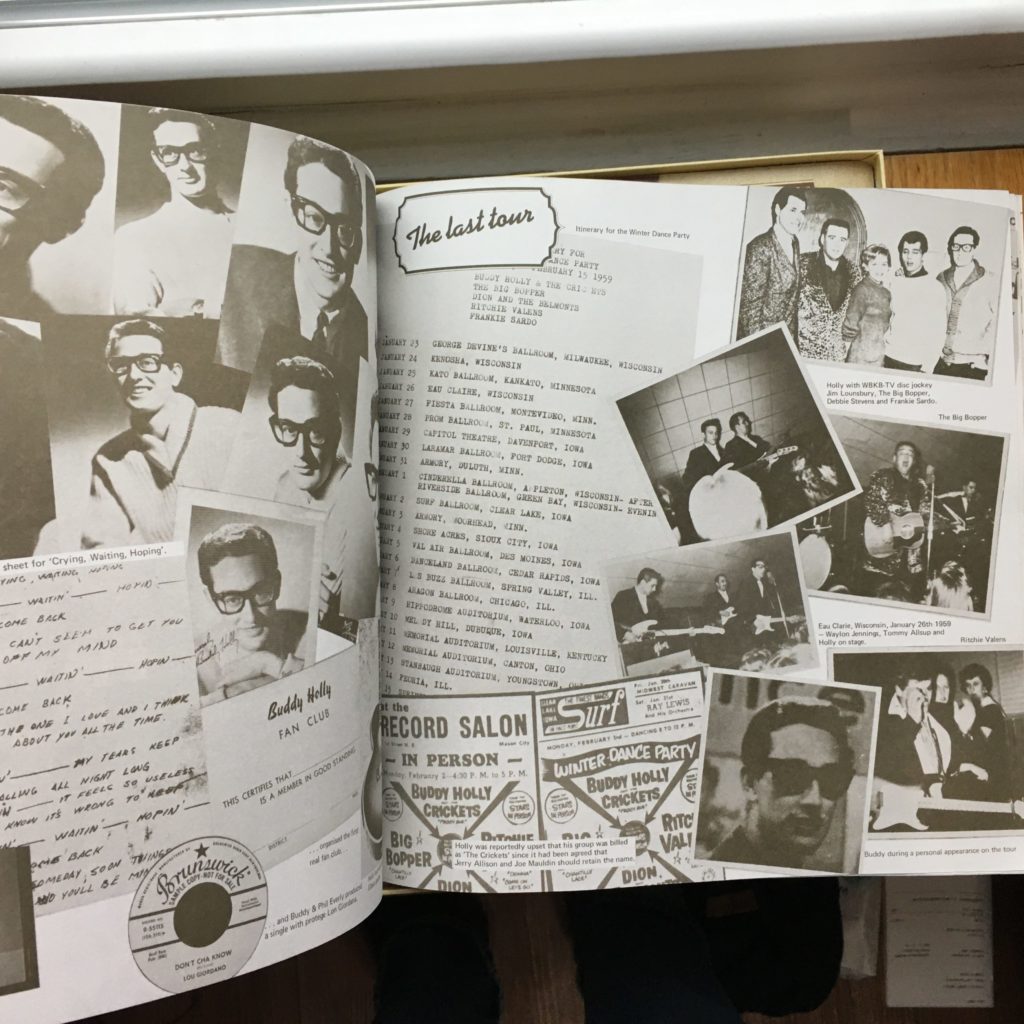
Buddy Holly box set booklet 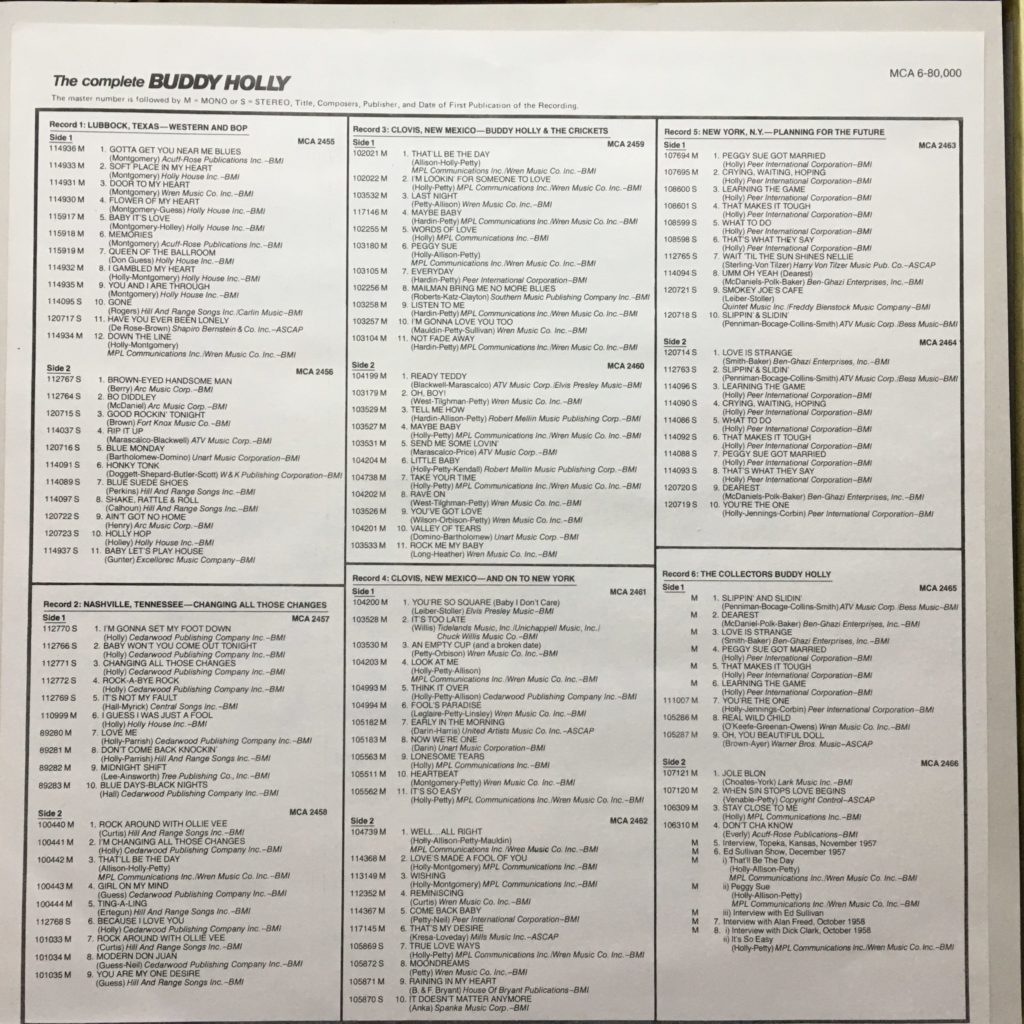
Track listing for the entire box set 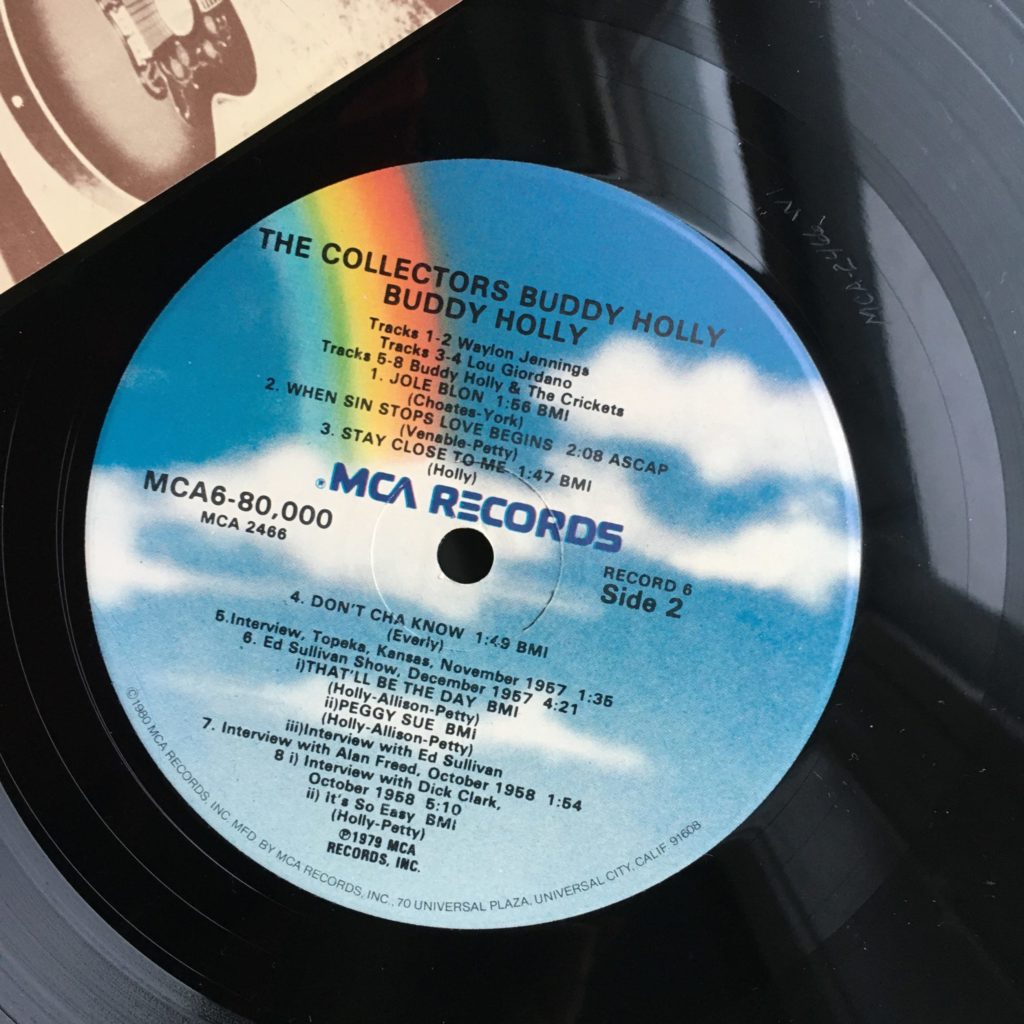
Buddy Holly box set label
The value of box sets, of course, is that they’re a deep dive. Everything or nearly everything is there. But the downside is: it’s a lot. Just getting the box out, getting the discs out – it’s a whole process. You have to be in the mood for plenty of whatever artist you’re listening to, because your favorite songs are probably spread all across the set. And so, for me at least, the boxes don’t come out very often. On this set, the Clovis and New York discs got a lot of play from me. It being the ’80s and post-college, rockabilly didn’t really fit in with the mix tapes I was making at the time, so Buddy didn’t make it onto my cassettes except for one particularly retro collection called “Brand New Cadillac.” In the ensuing years, this remained my only Buddy Holly for a long time (at some point I got a digital copy of “The Chirping Crickets,” but it hasn’t seen much play). I have many, many covers (including a covers album where I actively hate about half the contributions; I really only bought it for Florence & The Machine’s “Not Fade Away”) but very little actual Buddy in my iTunes. Listening to these songs again now, it’s very much like my Eddie Cochran box set experience: it’s about an even portion of ’50s white music that no one ever needed to hear again mixed with stuff that’s so revolutionary you can’t imagine how they recorded it at the time. I mean, where on earth did “Not Fade Away” come from? What were the influences that brought out the thrumming “Peggy Sue” and took rockabilly to the edge with “Oh Boy”? These were songs from 1957, when Pat Boone, Tab Hunter, and Jimmy Dorsey held the top chart positions. Yes, Elvis Presley was at the top with “All Shook Up,” but listen to how controlled, how tame the r’n’b of “All Shook Up” is compared to the frenetic beat and strained vocals of “Not Fade Away.” It’s hard to believe they were in the same universe. (“That’ll Be The Day” charted that year at number 30, and while it’s still a great Buddy Holly song, and it is more traditional sound, it still has a jangle that didn’t fit in with what else was on the charts.) Even his more static ’50s ballads tend to have some sort of vocal excitement that is missing from most of his contemporaries.
But it is a mix, and that’s the thing with vinyl – unless you’re up for jumping up and lifting the needle, you have to take it as it comes. This may be one I digitize so I have it in my computer (a tedious process I haven’t done in a long time), so I can assemble a true best-of list.
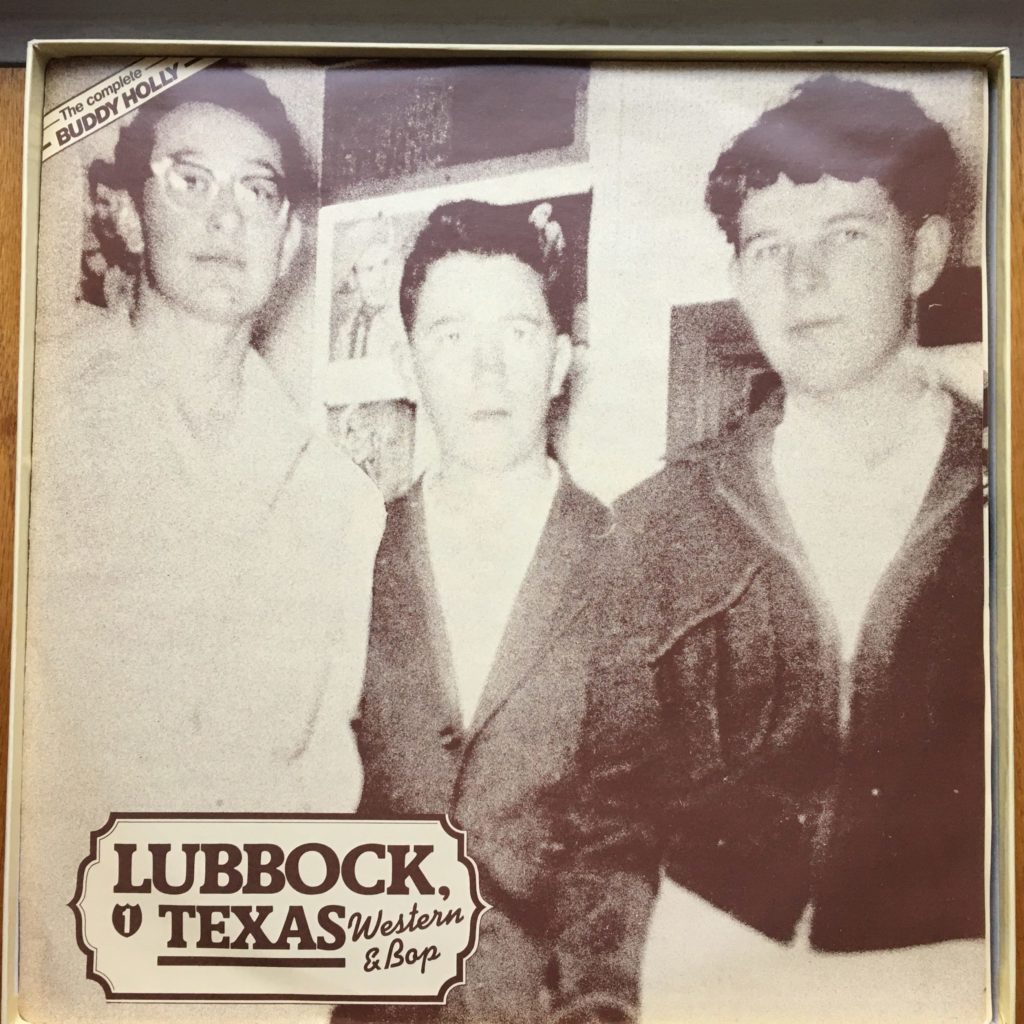
Buddy Holly sleeve 1: Lubbock 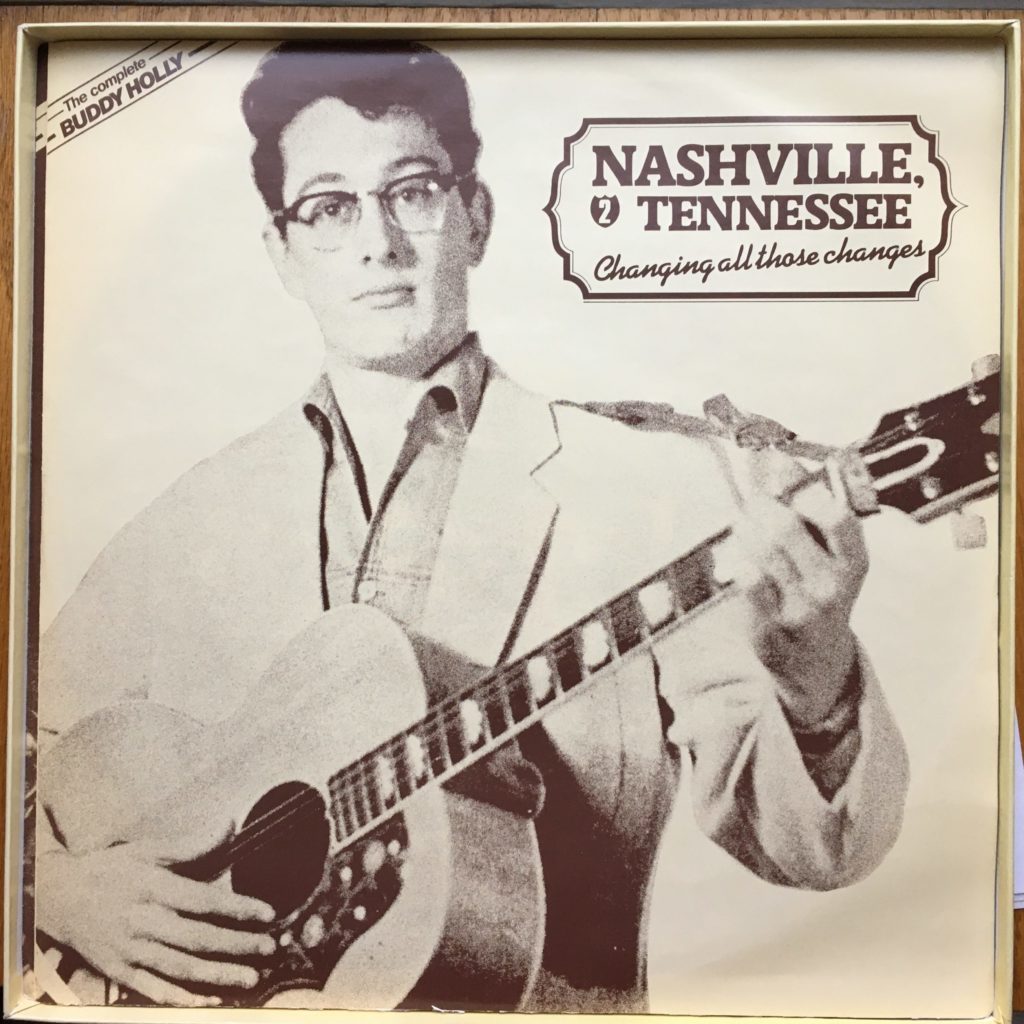
Buddy Holly sleeve 2: Nashville 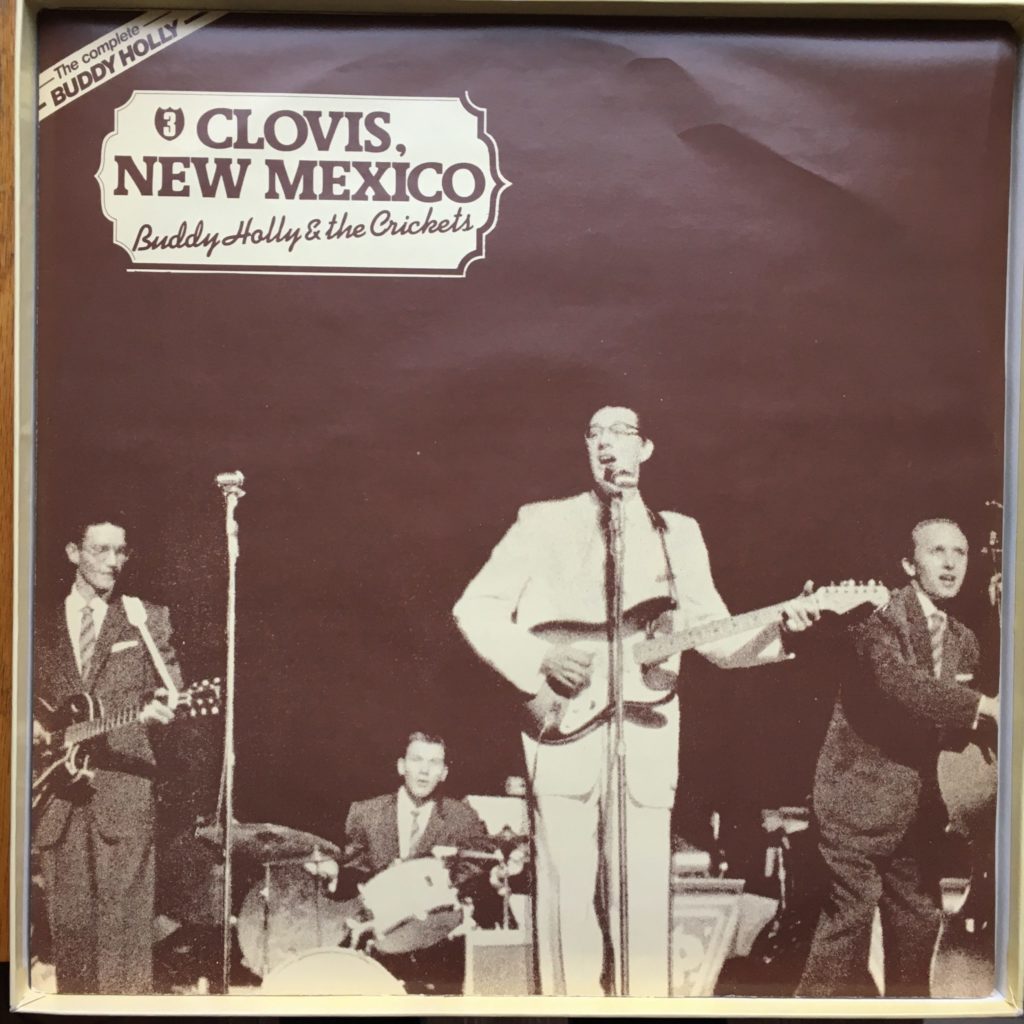
Buddy Holly sleeve 3: Clovis, NM 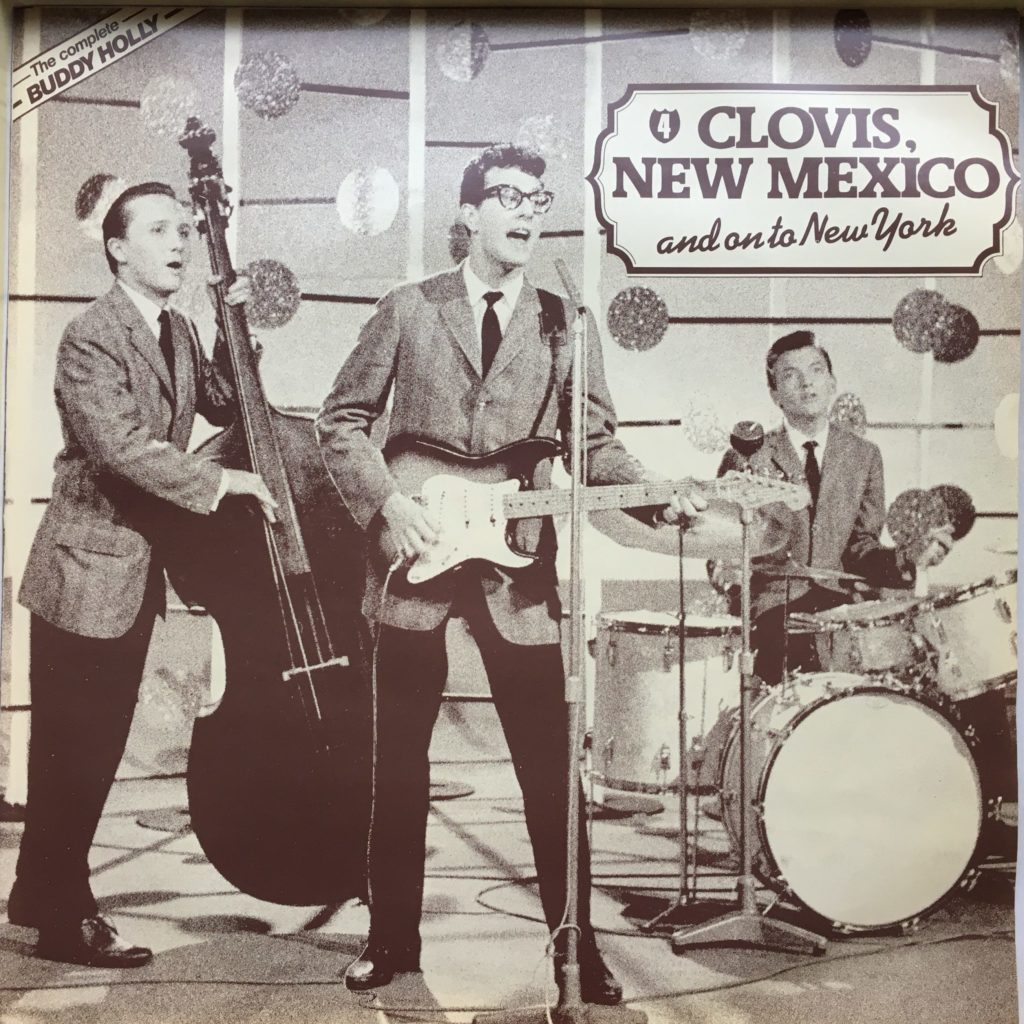
Buddy Holly sleeve 4: Clovis, NM 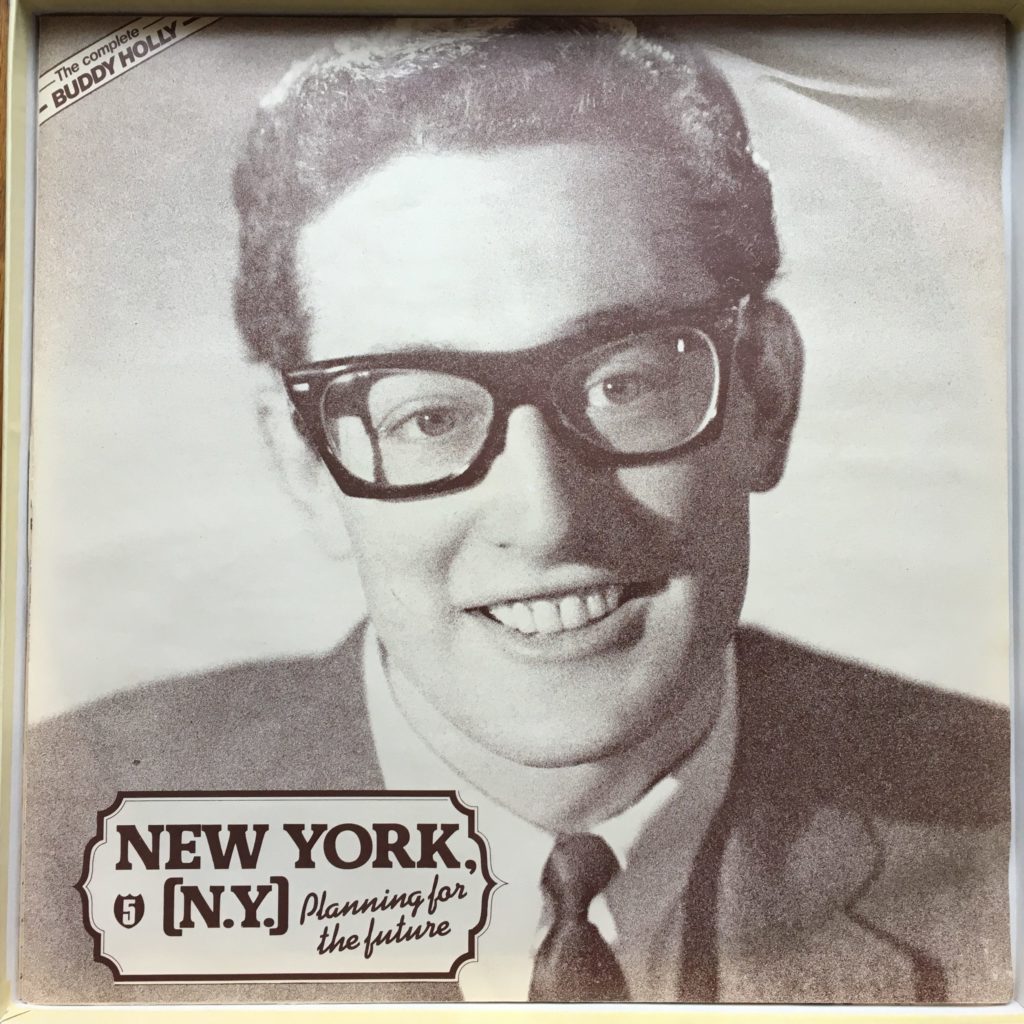
Buddy Holly sleeve 5: New York, NY 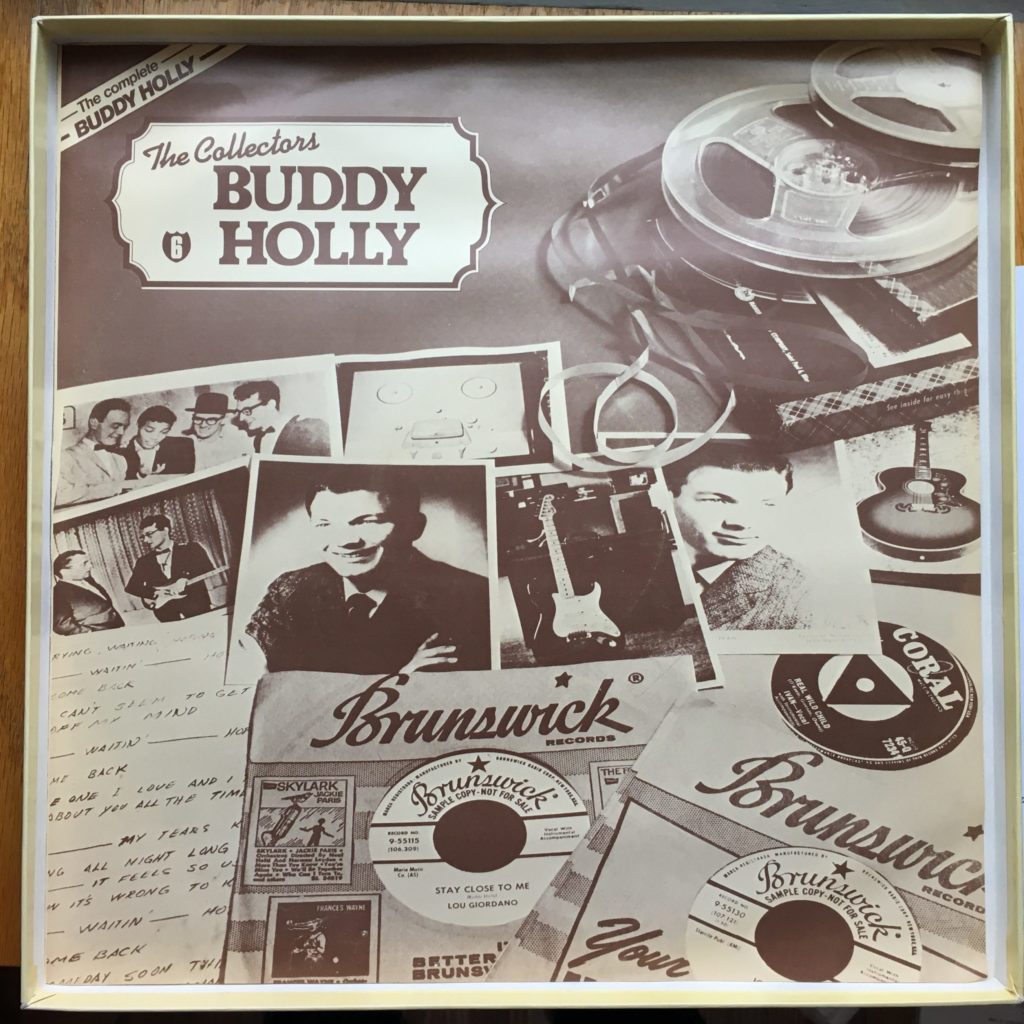
Buddy Holly sleeve 6: The Collectors Buddy Holly
